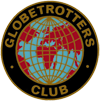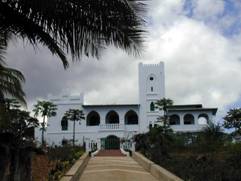What are they up to now? In yet another bid to save more money, Ryanair are trying to reduce the amount of luggage passengers check in. They say that passengers with checked-in baggage may be asked to pay a fee for each checked-in bag to reflect the cost of providing check-in and baggage handling services. Ryanair boss Michael O’Leary said that he hoped to introduce charges of up to £50 a bag next year, with a view to phasing out hold luggage. “The purpose is not to make money from checked-in luggage – the purpose is to get rid of it altogether.” In future, he said he wanted passengers to print out boarding passes when they booked tickets on the internet, allowing them to go directly to their departure gate on arrival at the airport.
So, be warned, you are encouraged to carry your luggage with you and will be forced to pay an excess luggage charge of £4.50 per kilo above the new checked in limit of 15kg. From July 2004, Ryanair have made changes to the amount of luggage that can be a) checked in; b) carried on to the plane and c) increased the excess luggage charge, as follows:
· Increase in the personal ‘carry on’ baggage limit from 7kgs to 10 kgs per passenger (will there really be enough room for ever passenger’s 7kg bag? I doubt it somehow.)
- Reduction in the personal ‘checked in’ baggage limit from 20 kgs to 15 kgs
- Increase in the charge for excess baggage from £4.00 to £4.50 per kilo.
Ryanair has sacked two of its workers who sat in an overcrowded plane’s toilets for a flight from Spain because there were no other seats. The captain of the packed flight from Girona, near Barcelona, to Dublin Airport resigned after he gave the two cabin crew permission. “This is the first such incident of staff travelling on an already full aircraft in the 20 year history of Ryanair,” the company said in a statement.
And more legal spats: after legal disagreements between Ryanair and BBA who operate Stansted airport on fuel charges at Stansted, Ryanair have announced that they will invest USD$240 million to expand its second British base at London Luton. Ryanair accused BAA of overcharging on a fuel levy introduced in 1991 to pay for a GBP£12 million (USD$22.1 million) fuel hydrant system, saying the airport operator had recovered more than GBP£34 million (USD$62.7 million) in 14 years. “There is going to be the mother and father of all wars,” Chief Exec Michael O’Leary told reporters in London. “We are not prepared to be robbed at Stansted. It is a low-cost airport with a high-cost fuel-levy scam going on.” BAA said it was planning to sue Ryanair for GBP£1 million (USD$1.85 million) in landing fees which it said the carrier was refusing to pay in response to the fuel-levy dispute.
Our friends Ryanair have been criticised by the UK advertising watchdog for using the term ‘giveaway’ in an advert. The advert stated a ‘one million flight giveaway’ as long as customers paid taxes, fees and airport charges. The British Advertising Standards Authority (ASA) said the advert which ran in the Daily Mirror newspaper was “ambiguous”. “If something is being described as a giveaway”. consumers shouldn’t have to spend a penny,” an ASA spokeswoman said. However, Ryanair argued that the term “giveaway” meant “to denote or bestow as a gift or prize” or “to sell very cheaply”. This is not the first time Ryanair has got into trouble with the ASA. In Feb 2004, the airline was deemed to have used offensive language in an advert – just before bonfire night in November, they had an ad depicting fireworks with the headline “Fawking great offers.” The ASA received 47 complaints from the public on the grounds that the wording was too suggestive.

 There are no winners, the aim is to ride one’s horse all day back and forth along the two hundred-metre track, taking a drink at each end. At lunchtime there is a break for more drinking, then the race begins afresh in the afternoon. Already by eight am, the riders are already very drunk and many have not slept at all – as the day goes on, their eyes become mirrors and many ride swaying back in their saddle, arms outstretched at their sides. During the race, one man falls from his horse and is trampled to death – many riders finish the day proudly wounded.
There are no winners, the aim is to ride one’s horse all day back and forth along the two hundred-metre track, taking a drink at each end. At lunchtime there is a break for more drinking, then the race begins afresh in the afternoon. Already by eight am, the riders are already very drunk and many have not slept at all – as the day goes on, their eyes become mirrors and many ride swaying back in their saddle, arms outstretched at their sides. During the race, one man falls from his horse and is trampled to death – many riders finish the day proudly wounded.  The ringing of metal hitting metal in the early evening sunshine rang across the stillness of the Fiord as we moored for the first night on our Norwegian sailing trip. Driving a steel stake into the rock that had a ring attached allowed one to pass a warp through the ring and back to a cleat on the boat – Thus enabling any one to explore the shore easily by just jumping on to the rocks from the bow or stern, have a BBQ or merely to stretch their legs in the evening after a day at sea. The locals used this way of mooring up for the afternoon or night, and this was only possible because of the lack of tides in this part of the world. This was a very pleasant surprise after the difficulties with tides and mooring in the UK.
The ringing of metal hitting metal in the early evening sunshine rang across the stillness of the Fiord as we moored for the first night on our Norwegian sailing trip. Driving a steel stake into the rock that had a ring attached allowed one to pass a warp through the ring and back to a cleat on the boat – Thus enabling any one to explore the shore easily by just jumping on to the rocks from the bow or stern, have a BBQ or merely to stretch their legs in the evening after a day at sea. The locals used this way of mooring up for the afternoon or night, and this was only possible because of the lack of tides in this part of the world. This was a very pleasant surprise after the difficulties with tides and mooring in the UK.  We had set out in ‘Turid’ a 35 ft Halberg Sailing sloop, from Kragero in the south of the country to enjoy a few days break from tackling the stresses and strains of life in London. The Norwegian Skipper had an old 1780’s house overlooking his mooring and was just back from sailing round Greece. David and I have been friends since way back when we were nearly young. He has a wooden Folk boat on the south coast of England and I once had a four berth sailing cruiser moored in Conway. The second piece of luck was that as we boarded the sun came out and for the rest of the trip we had sunshine until about 2130 hours at night with a temperature of 26 degrees Centigrade at sea during the day. People expect it to be cold but in the summer this place can be extremely warm, in fact the week after we left the temperature rose another five degrees.
We had set out in ‘Turid’ a 35 ft Halberg Sailing sloop, from Kragero in the south of the country to enjoy a few days break from tackling the stresses and strains of life in London. The Norwegian Skipper had an old 1780’s house overlooking his mooring and was just back from sailing round Greece. David and I have been friends since way back when we were nearly young. He has a wooden Folk boat on the south coast of England and I once had a four berth sailing cruiser moored in Conway. The second piece of luck was that as we boarded the sun came out and for the rest of the trip we had sunshine until about 2130 hours at night with a temperature of 26 degrees Centigrade at sea during the day. People expect it to be cold but in the summer this place can be extremely warm, in fact the week after we left the temperature rose another five degrees. We started our trip around this wonderful coast with fir trees on the rocks and the houses right on the waterside. Rocks and inlets all around the place, so be careful if you’re not with a local skipper who has a good knowledge of the area. It seemed that everyone in Norway had some sort of boat and they were all making the most of the summer either in their holiday homes right by the sea or on the water.
We started our trip around this wonderful coast with fir trees on the rocks and the houses right on the waterside. Rocks and inlets all around the place, so be careful if you’re not with a local skipper who has a good knowledge of the area. It seemed that everyone in Norway had some sort of boat and they were all making the most of the summer either in their holiday homes right by the sea or on the water. We only docked to take on provisions, but we still had time to visit some of the excellent little ports – Risor, Arendal, Grimstad to name but three. Grimstad was my favourite with some of its wooden houses, in the old town, going back to 1729. I even encountered two Dutch cycle campers that were on a cycle way that took in six north European countries.
We only docked to take on provisions, but we still had time to visit some of the excellent little ports – Risor, Arendal, Grimstad to name but three. Grimstad was my favourite with some of its wooden houses, in the old town, going back to 1729. I even encountered two Dutch cycle campers that were on a cycle way that took in six north European countries. Seeing the Boma, (see photo by the Beetle,) now a fully restored small hotel is even more amazing than any of the photos I had seen, such a dramatic transformation from the derelict building here on my arrival, which was only just nearing completion when I returned for the millennium festivities. It now stands in grounds surrounded by all manner of vibrant vegetation, attracting varied animal life – from butterflies to lizards to the occasional monkey.
Seeing the Boma, (see photo by the Beetle,) now a fully restored small hotel is even more amazing than any of the photos I had seen, such a dramatic transformation from the derelict building here on my arrival, which was only just nearing completion when I returned for the millennium festivities. It now stands in grounds surrounded by all manner of vibrant vegetation, attracting varied animal life – from butterflies to lizards to the occasional monkey.